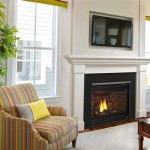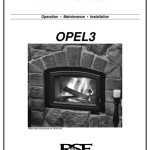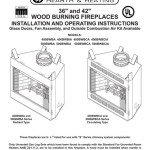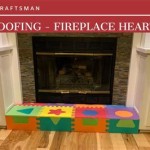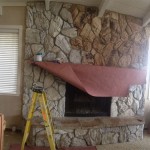Carved Wood Fireplace Mantels: A Timeless Centerpiece
Carved wood fireplace mantels represent a fusion of artistry and functionality, serving as a focal point within a room while providing a structure to frame the fireplace. Their enduring appeal stems from the warmth and character they introduce, transforming a simple hearth into a sophisticated architectural element. From rustic designs that evoke a sense of history to intricately detailed pieces that showcase exceptional craftsmanship, carved wood mantels offer a diverse range of styles to complement various interior design aesthetics.
The selection of a carved wood fireplace mantel involves careful consideration of several factors, including the type of wood, the carving style, the dimensions of the fireplace, and the overall décor of the room. Understanding these elements is crucial for making informed decisions that result in a mantel that not only enhances the aesthetic appeal of the space but also serves as a lasting investment.
Wood Selection: Impacting Aesthetics and Durability
The type of wood utilized in crafting a carved fireplace mantel significantly impacts its appearance, durability, and overall value. Different wood species possess unique characteristics in terms of grain pattern, color, hardness, and susceptibility to warping or cracking. Therefore, careful consideration of these factors is essential when choosing the appropriate wood for a particular application.
Oak, renowned for its strength and distinctive grain patterns, is a popular choice for carved mantels. White oak, with its lighter color and smoother texture, lends itself well to contemporary designs, while red oak, characterized by its reddish hue and more pronounced grain, is often favored for traditional settings. Oak's inherent durability makes it resistant to dents and scratches, ensuring that the mantel maintains its aesthetic appeal over time.
Mahogany, prized for its rich color, fine grain, and exceptional workability, is another highly sought-after wood for carved mantels. Its inherent beauty and ability to hold intricate details make it an ideal choice for elaborate carvings and ornate designs. Mahogany's resistance to decay and insect infestation further contributes to its longevity and desirability.
Pine, a readily available and relatively affordable wood, is often used for rustic or country-style mantels. Its soft texture allows for easy carving and distressing, creating a weathered and aged appearance. While pine is less durable than oak or mahogany, it can be adequately protected with proper sealing and finishing.
Cherry, known for its warm reddish-brown color and smooth grain, offers a blend of elegance and affordability. Its ability to darken and develop a richer patina over time adds to its appeal. Cherry's moderate hardness makes it suitable for both simple and intricate carvings.
Beyond these common choices, other woods such as maple, walnut, and alder are also used in crafting carved fireplace mantels, each offering unique aesthetic characteristics and performance attributes. The selection process should involve a thorough assessment of the desired aesthetic, the budget constraints, and the intended use of the mantel.
Carving Styles: Defining the Mantel's Character
The carving style employed in creating a wood fireplace mantel profoundly influences its character and historical context. Different carving techniques and motifs evoke distinct aesthetic sensibilities, ranging from classical elegance to rustic charm. Understanding these styles is crucial for selecting a mantel that aligns with the overall design vision for the room.
Classical carvings, inspired by ancient Greek and Roman art, often feature symmetrical designs, fluted columns, and architectural motifs such as acanthus leaves, scrolls, and dentil moldings. These carvings exude a sense of formality and grandeur, making them well-suited for traditional and formal living spaces. The precision and detail of classical carvings require skilled craftsmanship and meticulous attention to detail.
Victorian carvings, characterized by their elaborate ornamentation and intricate details, reflect the opulence and grandeur of the Victorian era. Floral motifs, scrolls, and elaborate moldings are common features of Victorian carved mantels. These carvings often incorporate a variety of textures and depths, creating a visually rich and engaging focal point. The complexity of Victorian carvings necessitates the use of specialized tools and techniques.
Rustic carvings, inspired by nature and the outdoors, often feature simple designs, natural motifs, and a more organic aesthetic. Carvings of leaves, branches, animals, and other natural elements are commonly incorporated into rustic mantels. The emphasis is on celebrating the natural beauty of the wood and creating a sense of warmth and authenticity. Rustic carvings often incorporate distressed finishes and aged textures to enhance their rustic appeal.
Modern carvings, characterized by their clean lines, minimalist designs, and geometric shapes, reflect the aesthetic principles of modernism. These carvings often feature smooth surfaces, simple forms, and a focus on functionality. Modern carved mantels are designed to complement contemporary interior design styles and create a sleek and streamlined look. The simplicity of modern carvings requires precise execution and a careful attention to detail.
Folk art carvings, inspired by traditional crafts and cultural motifs, often feature whimsical designs, colorful patterns, and a more whimsical aesthetic. These carvings often incorporate elements of storytelling and cultural symbolism, adding a unique and personal touch to the mantel. Folk art carvings can be highly individualistic and reflect the unique artistic vision of the craftsman.
The choice of carving style should be guided by the overall design aesthetic of the room and the desired level of formality. Careful consideration of the architectural context and personal preferences will ensure that the carved mantel seamlessly integrates into the space and enhances its overall appeal.
Dimensions and Installation: Ensuring Proper Fit and Safety
Proper dimensions and installation are crucial for ensuring the aesthetic appeal, functionality, and safety of a carved wood fireplace mantel. A mantel that is too small or too large for the fireplace opening will appear out of proportion and detract from the overall design. Improper installation can compromise the structural integrity of the mantel and create a fire hazard. Therefore, careful planning and execution are essential for a successful installation.
The dimensions of the mantel should be proportionate to the size of the fireplace opening and the overall dimensions of the room. A general rule of thumb is that the mantel should extend at least six inches beyond the firebox opening on each side and be positioned at least twelve inches above the top of the firebox. These measurements provide adequate clearance for heat and prevent the mantel from overheating.
The depth of the mantel shelf should be sufficient to accommodate decorative items such as candles, vases, and picture frames. A deeper shelf provides more display space but may protrude further into the room. The choice of shelf depth should be based on the intended use and the available space.
The installation process typically involves securing the mantel to the wall using a combination of screws, brackets, and construction adhesive. The type of fasteners and installation method will depend on the type of wall construction and the weight of the mantel. It is essential to use appropriate hardware and techniques to ensure that the mantel is securely attached to the wall.
Consulting with a qualified contractor or professional installer is recommended to ensure that the mantel is installed properly and safely. A professional installer will have the necessary skills and experience to assess the installation requirements, prepare the wall surface, and securely attach the mantel. They will also be able to advise on any necessary modifications or adjustments to ensure a proper fit.
Fire safety considerations are paramount during the installation process. The mantel should be positioned at a safe distance from the firebox to prevent overheating and potential fire hazards. Building codes and regulations often specify minimum clearances between the mantel and the firebox. It is essential to comply with all applicable codes and regulations to ensure the safety of the installation.
In addition to proper installation, regular maintenance is essential for preserving the beauty and longevity of a carved wood fireplace mantel. Dusting the mantel regularly and occasionally cleaning it with a mild soap and water solution will help to remove dirt and grime. Applying a coat of furniture polish or wood preservative periodically will help to protect the wood from moisture and prevent it from drying out. With proper care and maintenance, a carved wood fireplace mantel can provide years of enjoyment and enhance the beauty of any home.

Carved By Ramsey Wood Fireplace Mantels Woodcarving

Rustic Hand Carved Log Fireplace Mantels

Heartwood Carving Gallery Of Carved Decor Installations Fireplace Mantels

48 Carved Bear Scene Fireplace Mantel Cedar Shelf

Master Hand Carved Fireplace Mantel French Rococo Inspired Design

Hand Carved Salmon Fireplace Mantel Fine Art Custom Mantelpieces

Lindenwood Carved Mantel 81 Oa Width Opening 52 W X 40 H

Heartwood Carving Gallery Of Carved Decor Installations Fireplace Mantels

Wooden Accents Hand Carved Mantels

Carved By Ramsey Wood Fireplace Mantels Woodcarving


